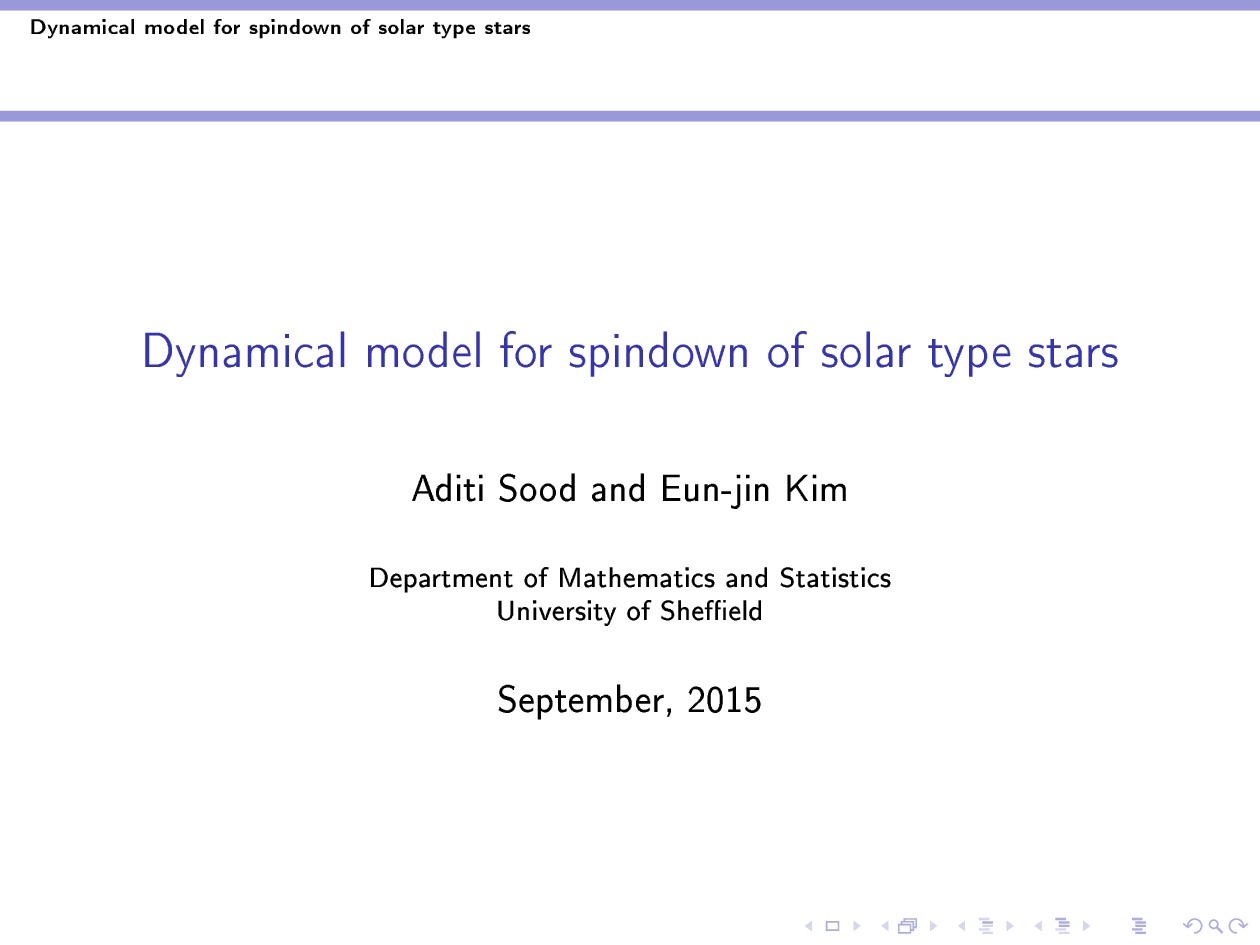Date of upload:
09.09.2015
Abstract:
We for the first time propose a spin-down model where the loss of angular momentum by magnetic fields is dynamically treated,
instead of being kinematically prescribed. To this end, we evolve stellar rotation and magnetic field simultaneously over the
stellar evolution time by incorporating the nonlinear feedback mechanisms on rotation and magnetic fields and examine the behaviour
of rotation rate $\Omega$ with time $t$, magnetic field strength $|B|$ and frequency of magnetic field $\omega_{cyc}$ with rotation rate $\Omega$.
Initially, rotation rate is found to decrease very rapidly with time until there is a sudden transition
from fast to slow spin down of stars. The dependence of rotation rate on time illustrates exponential spin-down for rapid rotators and power
law spin-down for slow rotators. For fast rotators, the strength $|B|$ is found to saturate for large $\Omega$ while for slow rotators, $|B|$ increases almost linearly with
$\Omega$. The analysis of the local frequency of magnetic fields reveals the existence of the two (active and inactive) branches of magnetic
fields for stars with different frequencies $\omega_{cyc}$ which have different scalings with rotation rate $\Omega$: the active and inactive branches
with power law scaling exponents 0.85 and 1.16, respectively. The transition from fast to slow rotators occurs very rapidly with the disappearance of the active branch.
.The Vaughan-Preston gap is consistently explained in our model by the shortest spin-down timescale in this transition from fast to slow rotators.
All these results successfully reproduce the key observations and capture the V-P gap in a self-contained model.
